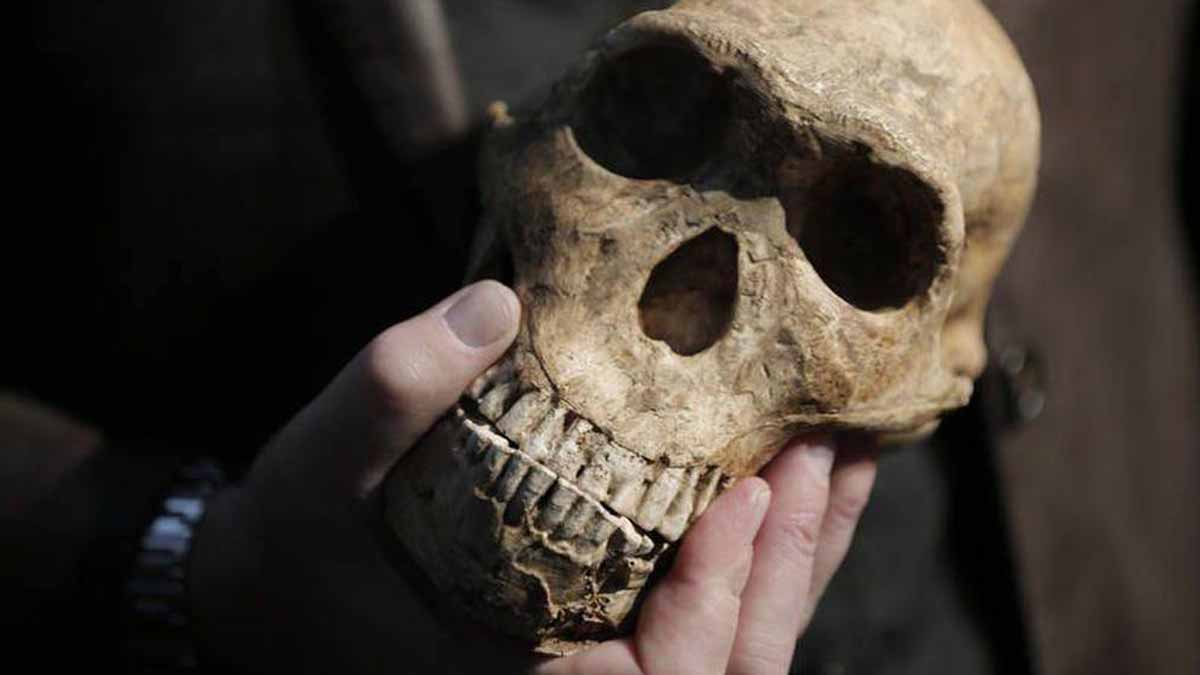On a wind-sculpted plateau in Ethiopia, a handful of teeth upends what we thought we knew about human origins. A new trove from Ledi-Geraru shows two early hominin lines sharing the same ground, at the same time. The find stays close to the clues, yet opens the door to bigger questions about who lived there, how they survived, and why their paths crossed in that deep past today.
Two lineages at one site and one span of time
At Ledi-Geraru in Ethiopia’s Afar, an international team led by Arizona State University documents coexistence between Australopithecus and the earliest Homo. The overlap falls between 2.6 and 2.8 million years ago, grounded in sediments that bracket the fossils. The team also reports a new species of Australopithecus known only from this place.
Thirteen teeth tell the story. Their shape and wear separate them from the famous Lucy lineage, Australopithecus afarensis. The team confirms there is still no evidence of Lucy’s kind after 2.95 million years. The same site also preserves teeth from early Homo, linking individuals to a critical stretch in our deep timeline.
The Ledi-Geraru research builds on a 2013 discovery here: the jaw of the oldest Homo yet, dated to 2.8 million years. The same landscape also yielded the earliest Oldowan stone tools. Together, these finds compress time and place, and they quietly redraw parts of human origins.
How geology locks in human origins timelines
The Afar is a rifting region, restless with past volcanoes. When eruptions spread ash, crystals of feldspar formed clocks inside the layers. Geologists date those clocks, then bound the fossils between ash above and ash below. This approach fixes age with unusual clarity for such ancient levels.
Christopher Campisano explains that scientists tie the teeth to the dated eruptions on the landscape. Because the fossils lie between known ash horizons, their ages track the eruptions that framed them. The method links sediments, faults, and flows, so the window of 2.6 to 2.8 million years holds.
Ramon Arrowsmith points to an interpretable record with strong age control from 2.3 to 2.95 million years. The geology does more than stamp a date. It describes the sediments that kept these remains safe, while rivers once braided through vegetation into shallow lakes that grew, then shrank, over long cycles.
What thirteen teeth reveal about two early lineages
The new teeth belong to both the genus Homo and a previously unknown Australopithecus. Naming that new species must wait, since teeth alone set real limits. Even so, the sample is rare, local, and diagnostic, which makes it a firm anchor for a crowded branch of the hominin tree we study.
Lead author Brian Villmoare says the Homo teeth confirm the antiquity of our lineage. We know the mandible from 2.8 million years, and now more crowns fill the picture. Yet the differences between the two groups need more fossils, so careful collecting remains the path forward for the team.
Here the story widens. Researchers are testing enamel to infer diet, because food choices shape ecology and movement. Did the groups compete, or share resources? Did they meet at water or shade? The answers will sharpen how this place fits inside human origins, and how both lineages used space.
Why overlapping species rewrite human origins narratives
Kaye Reed notes that evolution is not a ladder. It is a branching, bushy tree where lineages split and many go extinct. That picture matches two species together at one place, which breaks the old sequence many of us still carry from ape to Neanderthal to modern human.
This overlap matters because it shows parallel experiments in being human. While one lineage carried traits we link with our genus, another thrived beside it. The field record here joins bones, tools, and landscape into a single slice of time that is unusually tight.
Reed co-directs the Ledi-Geraru project and has done so since 2002. The 2013 jaw and the earliest Oldowan tools frame this find and set the stakes. With each season, the site adds layers of detail that change how we read the first steps toward later people.
Team, timeline, and the work still ahead at Ledi-Geraru
The project is led from Arizona State University’s Institute of Human Origins and the School of Human Evolution and Social Change. The Nature paper reports the new teeth from Australopithecus and Homo, and it ties them to the dated volcanic framework that secures the chronology and the local context.
Authors include Brian Villmoare and Lucas Delezene. They also include Amy Rector, Erin DiMaggio, David Feary, Daniel Chupik, and Dominique Garello. Ellis M. Locke, Joshua Robinson, and Irene Smail contribute as well, and the late William Kimbel’s influence runs through the project legacy.
Reed says more fossils will answer sharper questions. Training new field scientists and finding new sites stay central, because more pieces change the picture fast. We are the survivors, she notes, so the story we seek is ours too, and it keeps reshaping human origins through each careful season.
What this Ethiopian fossil find changes now and next for science
The Ledi-Geraru teeth compress time, place, and behavior into a vivid scene where two lineages lived side by side. Because the dates are secure, the questions grow bolder: diet, conflict, and shared space. The team will test enamel, return to the badlands, and widen the map with patient seasons. In the process, they will refine human origins while keeping room for surprises that new fossils always bring, and fresh questions still in play.

Great… now some wyt mans going to put those teeth in his mouth. Leave thine Æuarth alone.